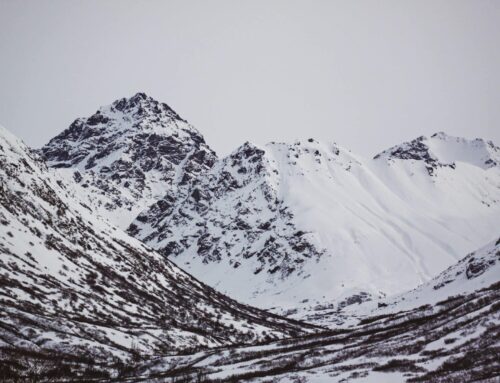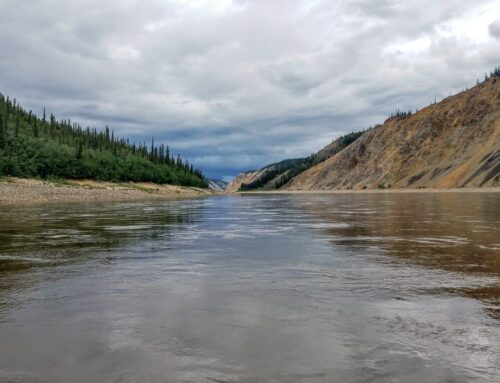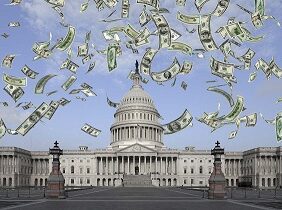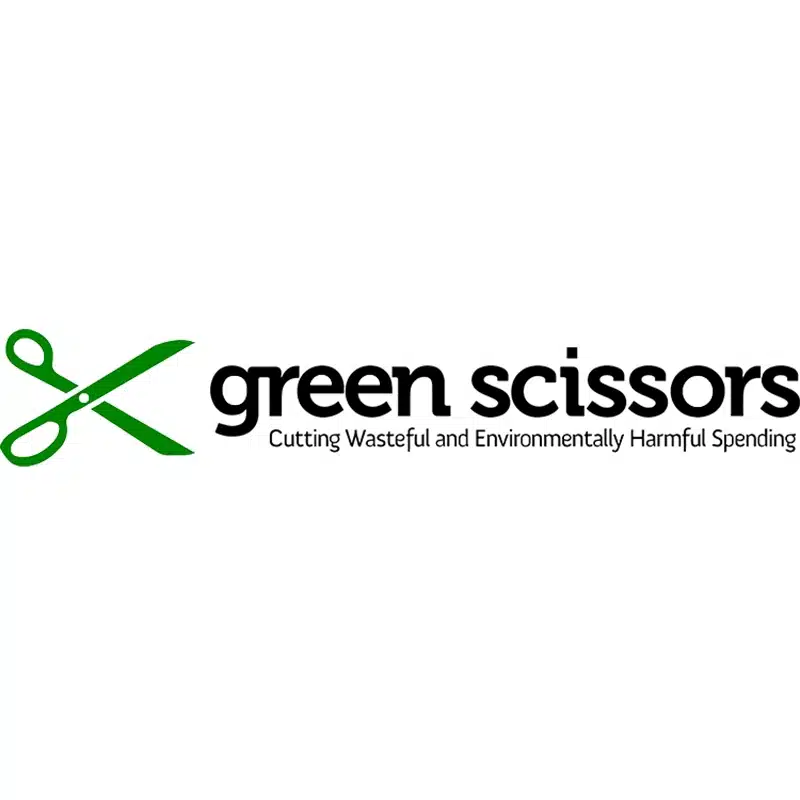-
What is the Arctic National Wildlife Refuge and has it always been open to oil and gas leasing?
The Arctic National Wildlife Refuge (ANWR) was established in 1960 by President Dwight Eisenhower. In the 1980s, the area was expanded to its current size of 30,500 square miles and nearly 40 percent of the area was designated as Wilderness, making it the largest refuge within the National Wildlife Refuge System. The 1980 Alaska National Interest Lands Conservation Act (P.L. 96-487) mandates that potential oil reserves in the refuge’s 1.5-million-acre, non-Wilderness coastal plain—also referred to as the 1002 area—be considered for development, but only if Congress authorizes it. In 2017, Congress opened the 1002 area for oil and gas development. Two lease sales have been offered since the authorization. There are currently seven active leases in ANWR, totaling 365,755 acres.
-
Why are oil and gas leases being offered in the Arctic Refuge now?
The 2017 Tax Cuts and Jobs Act (TCJA, P.L. 115-97), the budget reconciliation bill for FY2018, authorized a federal oil and gas leasing program in the Coastal Plain of the Arctic National Wildlife Refuge. Specifically, the TCJA required the Bureau of Land Management (BLM) to hold two lease sales within seven years of enactment, each of which with at least 400,000 acres up for auction. The bill stipulated that no more than 2,000 acres of surface development could be allowed throughout all stages of production. This provision was originally proposed as a revenue raiser that would generate almost $1 billion to offset the legislation’s $1.9 trillion price tag. However, the results of the two mandated lease sales have proven the revenue estimates to be laughably off.
-
Who is responsible for oil and gas leasing in the Arctic Refuge and what revenues do federal taxpayers receive from the leasing program?
The Bureau of Land Management (BLM) within the Department of Interior (DOI) is responsible for leasing oil and gas for development throughout the federal onshore mineral estate.
Under the Mineral Leasing Act (MLA), the Secretary of the Interior is required to hold leases sales at least quarterly in every state where unleased lands are available. For ordinary oil and gas leases, the area to be offered in each lease tract is to be no more than 2,560 acres. For leases in Alaska or in “tar sands,” each lease tract may be up to 5,760 acres.
The MLA requires that leases go to the highest bidder who offers at least a “national minimum acceptable bid” per acre. For the lease auction in the ANWR, the minimum bid was $25/acre for in 2021 and $30/acre in 2025. These “bonus bids” are an amount per acre that the potential lessee pays to receive the lease.
Typically, the highest bid from a qualified bidder wins the lease to the parcel, but the Bureau of Land Management is not required to accept a bid. In the Arctic National Wildlife Refuge (ANWR) lease sale, bidders who tied for the same parcel had the opportunity to submit additional bids two weeks after the original sale.
Before the Bureau of Land Management issues a lease, the winning bidder (assuming they meet all other requirements) must pay the entire bonus bid, the filing fee of $170/parcel, and the first year’s rent for the parcel, which is set at $10/acre in the Arctic Refuge.
Half of all revenues from the lease sale (and any later production) are shared with the State of Alaska. E.g. If bid revenues total $20 million, the federal Treasury receives $10 million and the state gets $10 million.
-
When oil and gas leasing in the Arctic Refuge was included in the Tax Cuts and Jobs Act, how much revenue was it estimated to raise? And why did TCS think that amount was unlikely?
The Senate Energy and Natural Resources Committee included leasing in the ANWR Coastal Plain as a way to generate $1 billion in revenue in response to budget reconciliation instructions in the FY2018 budget resolution. It was ostensibly included as an offset for the $1.9 trillion dollar tax bill.
When the leasing authorization eventually passed as part of the 2017 Tax Cuts and Jobs Act (P.L. 115-97 §20001), the Congressional Budget Office (CBO) estimated it would raise $910 million. That reflects only the federal portion of receipts, meaning they expected the two lease sales to generate $1.82 billion total in revenue over 10 years.
The CBO noted that its final estimate of $910 million in federal revenue from leasing the Coastal Plain (with another $910 million going to Alaska) was based on conversations with industry officials and the results of auctions for high-value oil and gas leases in the Lower 48.
In June 2019, the CBO slightly modified their original estimate of $1.82 to $1.81 billion in bonus bid and rental revenue, resulting in federal receipts of $905 million over the next 10 years.
TCS examined what oil and gas companies—the same companies likely to bid for ANWR leases—paid to lease land and water immediately adjacent to the Coastal Plain since 1999. Only a dozen parcels were ever sold for more than $30/acre. Only one was sold for more than $100/acre and that was back in 2002. The average for all ANWR-adjacent parcels since 2000 was $24/acre, an order of magnitude less than what would have been needed to get to the CBO’s estimated revenue of $1.81 billion.
Put simply, all of the available evidence from the closest comparable lease sales indicated bidding levels would not approach the level needed to generate the estimated revenue.
The lease sale result confirmed our analysis (see more in Q4) as the auction only brought in $16.5 million in total revenues, less than 1% of what CBO estimated. In November 2021, the CBO further lowered their original estimate of federal receipts to $35 million.
-
What were the results of the first oil and gas lease sale in the Arctic Refuge? How much revenue did the lease sale generate?
In January 2021, the Bureau of Land Management (BLM), under the U.S. Department of the Interior (DOI), held the first of two auctions for leases to develop oil and gas resources in the Coastal Plain of the ANWR in Alaska.
The lease sale offered 22 parcels covering 1,089,053 acres (see map). About half, or 11 parcels, were bid on. Of those 11, nine were won by the Alaska Industrial Development and Export Authority (AIDEA). AIDEA is a public corporation of the State of Alaska. All 9 parcels bid by AIDEA received the minimum acceptable bid of $25 per acre. Just two valid bids were submitted by private parties – Knik Arm Services LLC and Regenerate Alaska. Knik Arm Services is a privately held limited liability company that holds oil and gas properties. Regenerate Alaska is a subsidiary of 88 Energy Ltd., an oil and gas company. The two bids from Knik Arm Services LLC, and Regenerate Alaska averaged $33.22/acre. In total, the sale bids averaged $26.07/acre.
According to the day of bidding results, the lease sale generated less than $20 million in total: $14.4 million in bids and $5.5 million from the first year’s rent, with half of all proceeds shared with the State of Alaska.
Two weeks after the auction results were posted, the AIDEA decided not to pursue two of the parcels they bid on, resulting in a total of 9 parcels covering 437,804 acres being sold.
Therefore, the total revenue was reduced to $16.5 million, making the federal receipts just $8.2 million, or less than one percent of the $905 million taxpayers were promised when Congress authorized the sales. Since then, new developments have further lowered the lease sale revenue.
-
What is the status of the Arctic Refuge leases from the first auction now?
A week after the Bureau of Land Management announced the final results of the January 2021 lease sale, President Biden entered office and issued an executive order pausing all implementation of the Coastal Plain Oil and Gas Leasing Program in ANWR. In June 2021, Secretary of the Interior Haaland issued a Secretarial Order confirming the pause pending the completion of new analysis of the program’s potential environmental effects.
Regenerate Alaska canceled its 23,000-acre lease in May 2022. Regenerate Alaska was the only oil and gas company that bid during the first ANWR auction. According to the Interior Department, the company was refunded its full bonus bid and first year rentals, approximately $1 million, bringing down the total revenue gained from the sale.
In August 2022, Knik Arm Services LLC also canceled its 48,603-acre lease and was refunded its full bonus bid and first year rentals, approximately $2.1 million. Total revenue from the original sale was further reduced to just $13.4 million, less than three quarters of one percent of what taxpayers were promised. Federal receipts were reduced to $6.7 million. Only the Alaska Industrial Development and Export Authority (AIDEA) still held leases in the ANWR.
These announcements came on the heels of two other oil companies with existing leases within the nonfederal lands portion of the Arctic Refuge, Chevron and Hilcorp, exiting their claims in 2021. Chevron was designated as a lease operator in 1984 and Hilcorp in 2019 after purchasing BP’s exploration lease interests. Other oil and gas developers have also expressed disinterest in pursing new projects in the region; in April 2023 ExxonMobil informed shareholders that the company “does not hold any active leases and is not pursuing any active developments within the Arctic National Wildlife Refuge.”
Similarly, major U.S. banks—including Wells Fargo, Goldman Sachs, Morgan Stanley, CitiBank, and Chase—and numerous insurance companies—including U.S.-based Chubb—have announced that they will no longer finance or insure oil businesses in the Arctic Refuge. These decisions are further evidence of waning industry interest and poor prospects for oil and gas development in the area.
In September 2023, the Department of the Interior announced the rescission of the remaining 7 federal oil and gas leases in the Arctic Refuge. The Department of the Interior pointed to serious flaws and legal deficiencies in the underlying analysis for the January 2021 lease sale. These leases were reinstated by a court order on March 25, 2025. As a result, there are currently seven active leases in the Arctic Refuge, totaling 365,755 acres.
- What were the results of the second oil and gas lease sale in the Arctic Refuge? How much revenue did the lease sale generate?
The second federal oil and gas lease sale in the Arctic Refuge received no industry interest, resulting in no revenue for federal or Alaska state taxpayers. No active leases were issued in the Arctic Refuge by the end of the second lease sale.
The second auction was held on January 10, 2025, and offered 400,000 acres of federal land—the congressionally mandated minimum—for oil and gas development. Leases issued would have had a primary term of ten years with a fixed royalty rate of 16.67%. The statutory minimum bid was $30/acre, an increase from the $25/acre minimum bid in the 2021 sale.
The deadline to submit bids for the lease sale was January 6, 2025. On January 8, 2025, the Department of the Interior announced that the Bureau of Land Management received no bids, concluding the second congressionally mandated sale required by the 2017 Tax Cuts and Jobs Act.
- How much revenue can federal taxpayers expect from future oil and gas lease sales in the Arctic Refuge?
Federal taxpayers could expect to receive between $3 million and $30 million in total revenue from future oil and gas lease sales in the Arctic National Wildlife Refuge.
This revenue estimate is based on federal and Alaska state oil and gas lease auction data from 2005 to 2024 in Alaska’s North Slope region. Specifically, TCS analyzed results from lease sales in the federal National Petroleum Reserve–Alaska (NPRA), state-managed waters in the Beaufort Sea, and adjacent state lands.
Using the average bid of $38.40 per acre from these lease sales, TCS developed multiple revenue scenarios for potential ANWR leasing:
- If industry interest in ANWR leasing follows trends seen in the NPR-A, where than 10% of the 1.56 million acres of the Coastal Plain are bid on and leased, federal taxpayers would only receive only $3 million in revenue.
- If industry bidding mirrors that of the first auction in the ANWR, where 40% of the 1.56 million acres of the Coastal Plain are bid on and leased, federal taxpayers would receive $12 million.
- If all of ANWR’s 1.56 million available acres were bid on and leased, revenue could reach $30 million—though no auction in the NPR-A or Alaska state lands has ever achieved full participation in the 20-year span of time we analyzed.
- What liabilities does drilling in the Arctic Refuge preset for American taxpayers?
There is evidence that spills are likely if development proceeds in the Coastal Plain. In a 2018 study, the Bureau of Land Management (BLM) noted that small spills “are inevitable” in the nearby National Petroleum Reserve in Alaska (NPR-A). NPR-A is a roughly 23-million-acre area located along the western third of Alaska’s Arctic coast that was designated the emergency reserve of producible petroleum for the U.S. Navy but has been managed by the Bureau of Land Management since the 1970s.
The U.S. Energy Information Administration estimated that a total mean of approximately 3.4 billion barrels of oil could be produced in the Arctic Refuge by 2050. Using this projection of potential oil produced from the Coastal Plain and the Bureau of Land Management’s spill rates for NPR-A development, there would likely be 8+ medium spills of between 2,100 to 36,000 barrels.
In the inaccessible, extreme climate of the Coastal Plain, clean-up would be difficult and costly, making oil and gas development in the region highly risky. Many major banks, insurance companies, and other financial institutions—including Wells Fargo, Goldman Sachs, Morgan Stanley, Citibank, Chase, and Chubbs—have steered away from developing in the area due to risk concerns. Cleanup liabilities created by oil and gas companies often get passed down to taxpayers. Besides any potential future cleanup liabilities, taxpayers should also be concerned about long-term climate liabilities associated with drilling in a remote and sensitive region.











Get Social